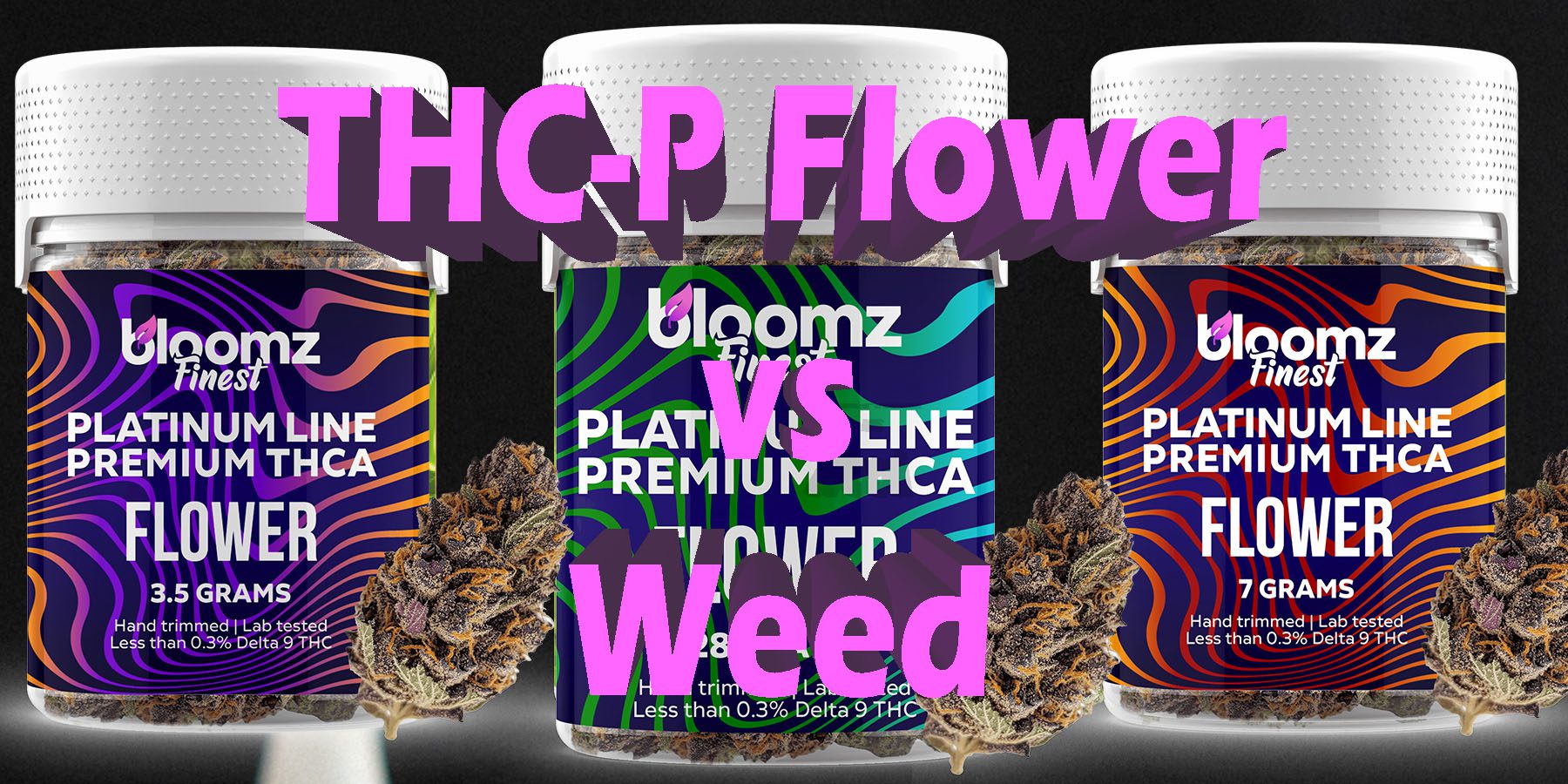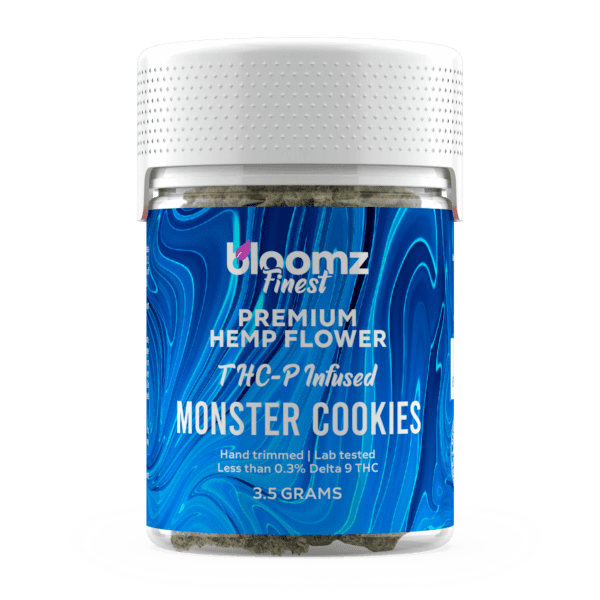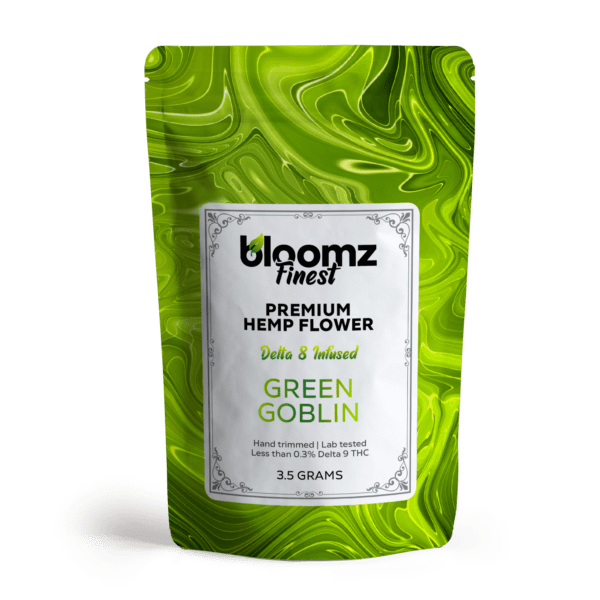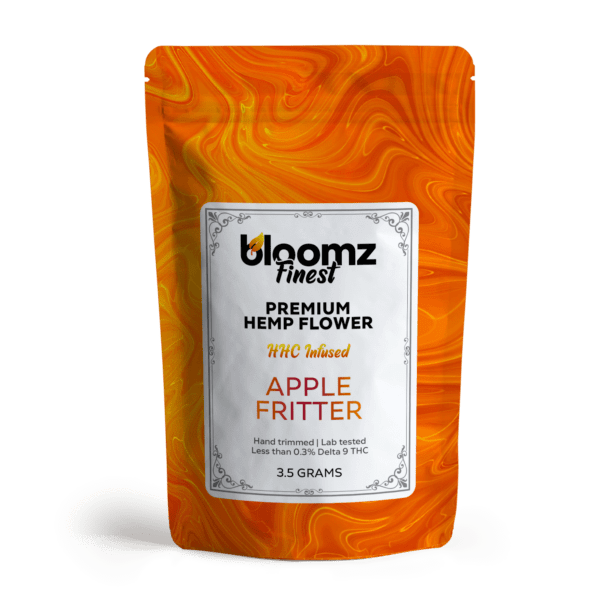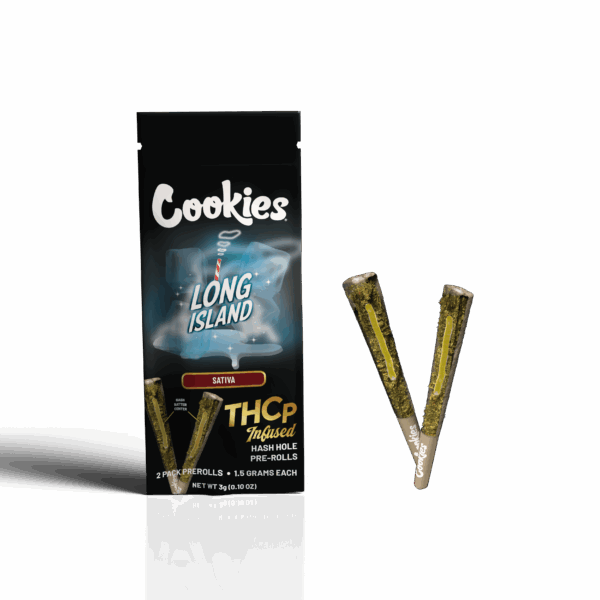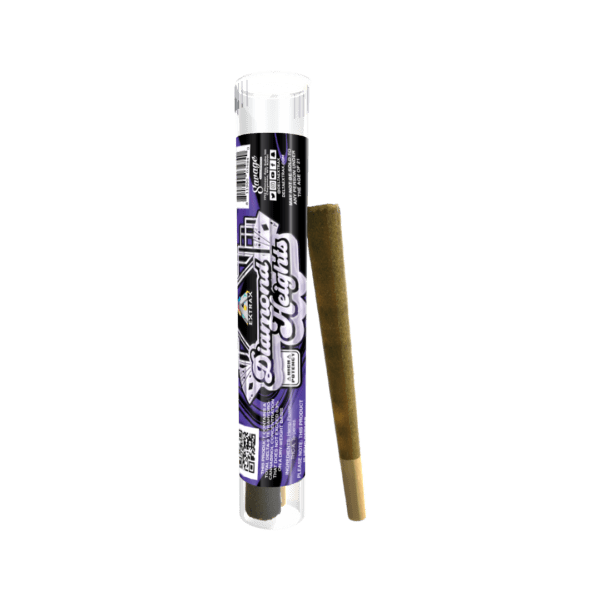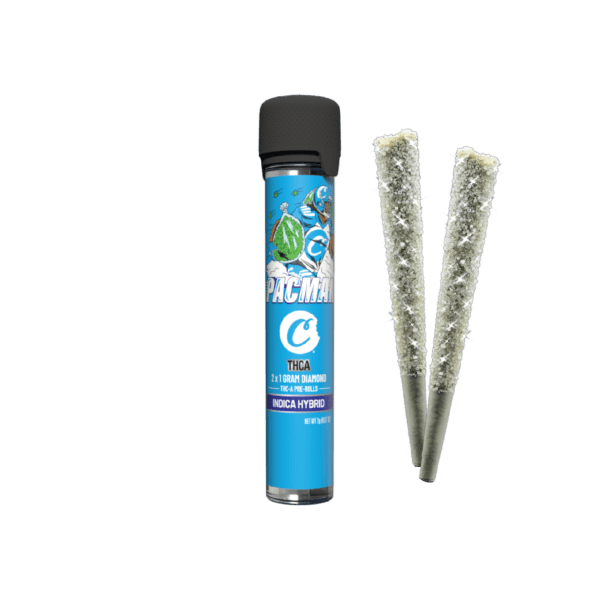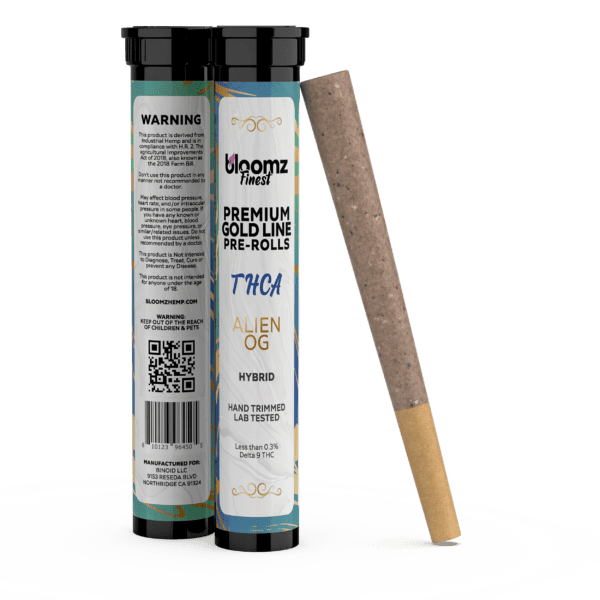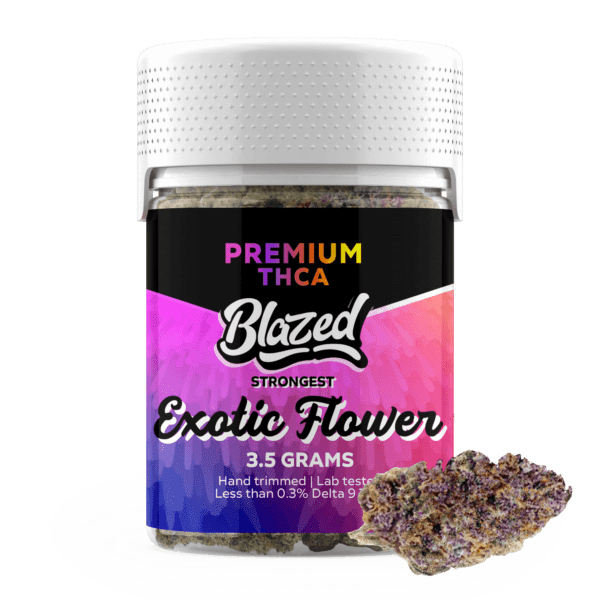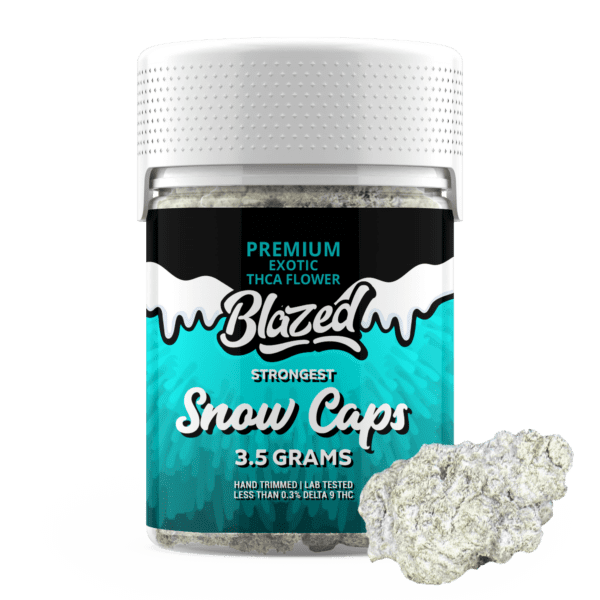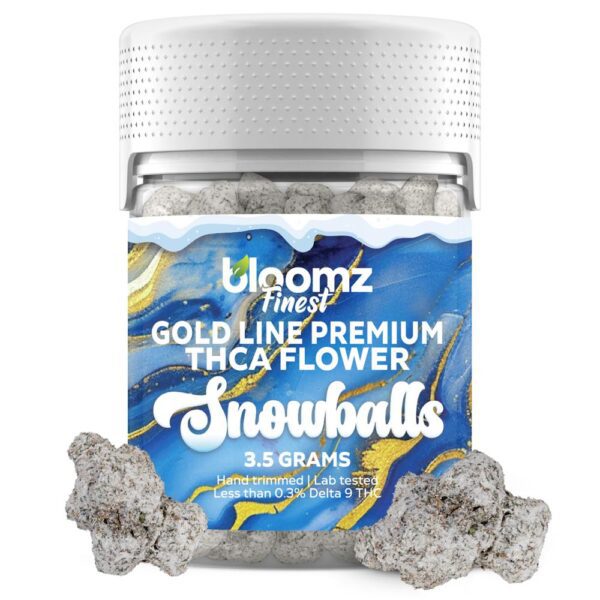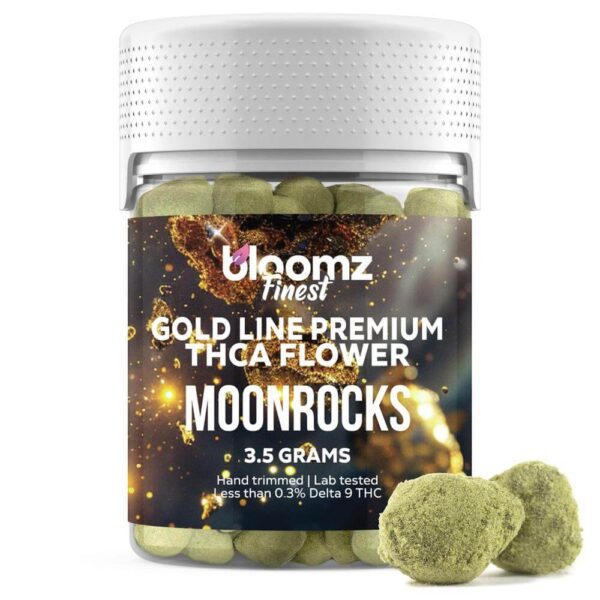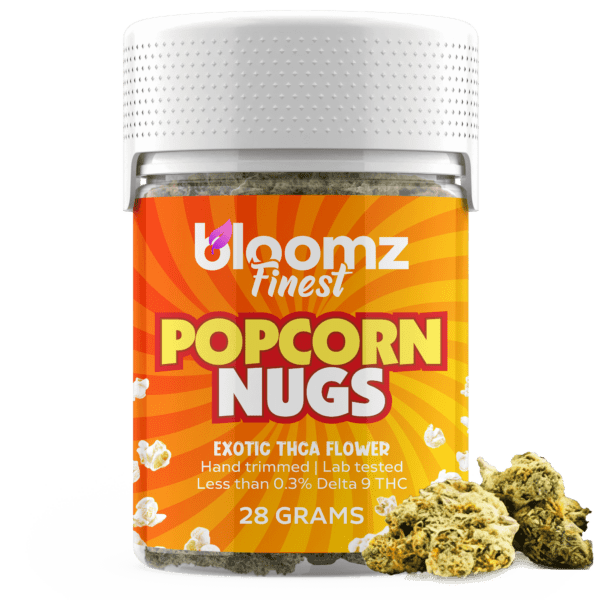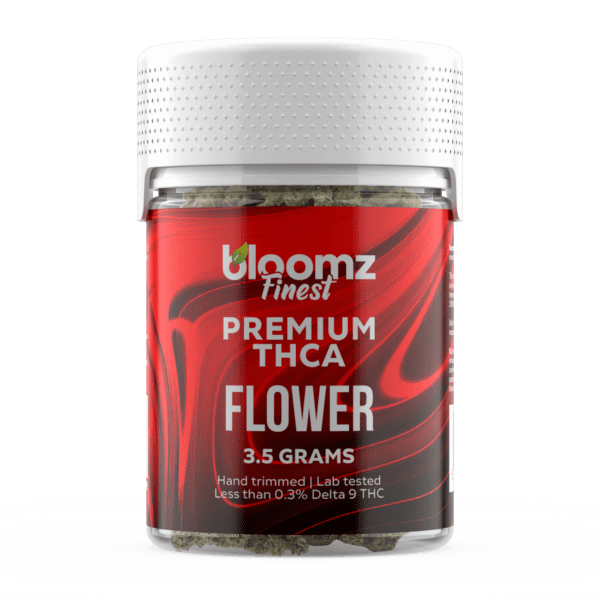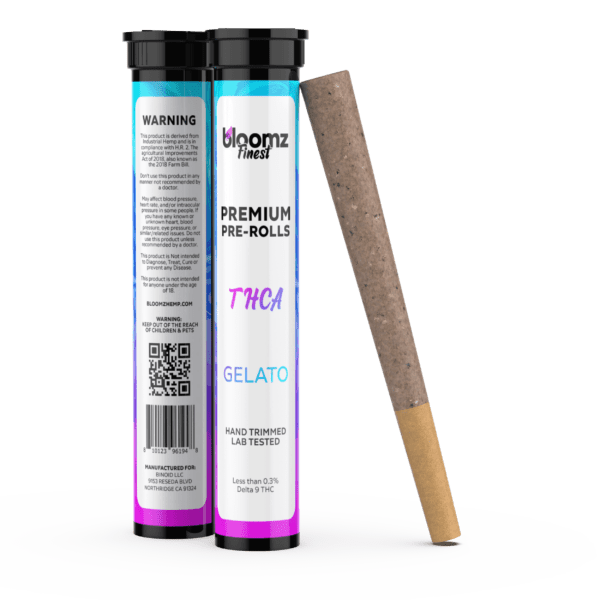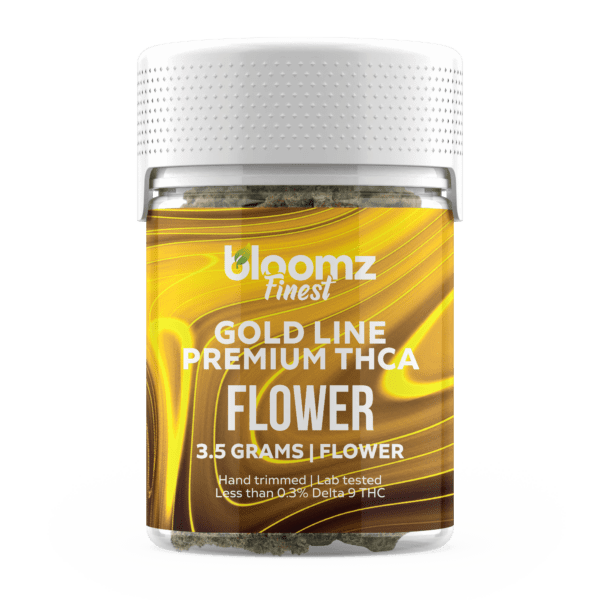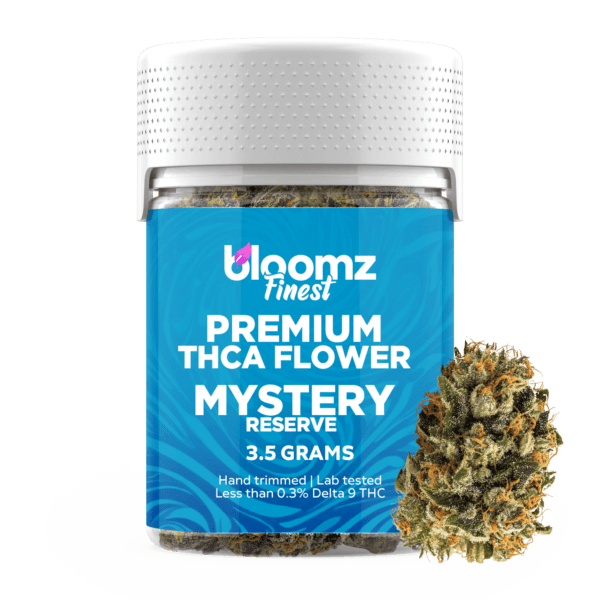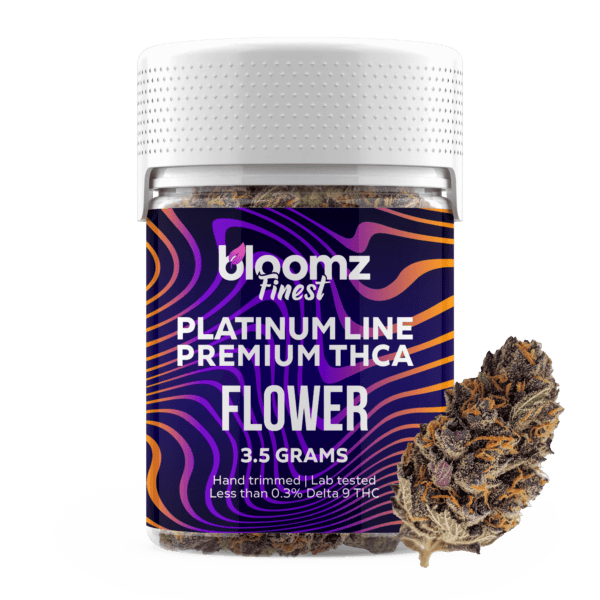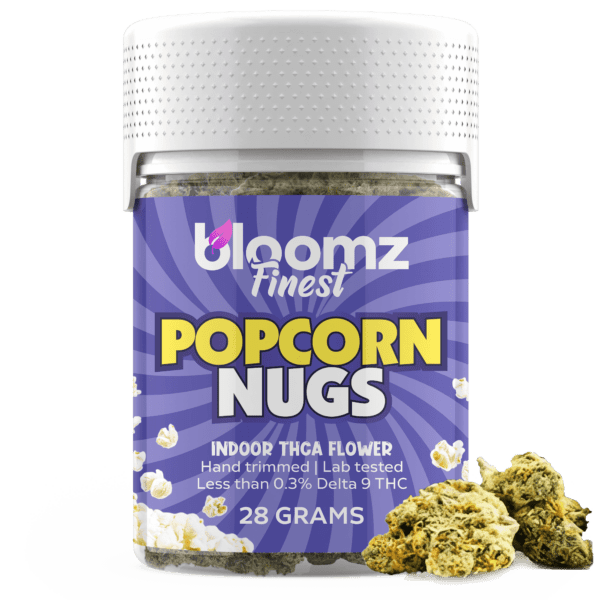In the vast and ever-shifting landscape of cannabinoids, where scientific discovery continually pushes the boundaries of what we thought we knew, a new heavyweight has entered the arena, commanding attention with its sheer, unadulterated power. This formidable contender is THC-P, a recently discovered compound whose potency has sent ripples of excitement and caution throughout the community, giving rise to an entirely new class of products, most notably THC-P flower. Its emergence has inevitably set up a fascinating and almost mythical matchup against the timeless champion, the original titan of the cannabis world: traditional weed.
This is far more than a simple side-by-side comparison; it is a deep dive into the very limits of botanical potential, a compelling narrative that pits the natural, holistic power of a revered plant against the focused, amplified intensity of a single, powerful molecule.
TO BUY THC-P FLOWER CLICK HERE
Recommended products
Why It’s Important to Breakdown the Matchup of THC-P Flower vs. Weed
To navigate the cutting edge of the modern cannabinoid market, it is not just helpful but absolutely essential to conduct a thorough breakdown of the matchup between THC-P flower and traditional weed. These two products, both offering a pathway to a euphoric experience, also represent vastly different points on the spectrum of potency, origin, and regulation. The explosion of hemp-derived cannabinoids, made possible by the 2018 Farm Bill, has introduced compounds like THC-P that are orders of magnitude more powerful than their traditional counterparts. Without a clear and sober understanding of these differences, consumers, especially those new to the space, risk venturing into territory for which they are unprepared, leading to experiences that could be overwhelming or unpleasant:
Understanding the Colossal Difference in Potency: The single most critical reason to break down this comparison is to fully comprehend the staggering difference in molecular potency between THC-P and the Delta 9 THC found in weed. Scientific research suggests that THC-P has a significantly higher binding affinity for the body’s CB1 receptors, making it potentially many times more powerful on a milligram-for-milligram basis. A detailed breakdown is crucial for educating consumers about this immense power, allowing them to approach THC-P with the extreme caution it warrants and to understand that it is a product intended only for the most experienced users with very high tolerances.
Clarifying the Distinction Between Natural and Infused Products: This matchup highlights a fundamental difference in product creation. Traditional weed is an agricultural product, a flower cultivated to naturally produce its full spectrum of compounds. THC-P flower, by contrast, is a manufactured good. It is created by taking a base of non-intoxicating hemp flower and artificially infusing it with a THC-P concentrate that has been synthesized in a laboratory. Understanding this distinction—a naturally grown, holistic plant versus a scientifically enhanced, multi-component product—is vital for evaluating the product’s nature, potential consistency, and the importance of verifying its purity.
Navigating the Murky and Unsettled Legal Waters: The legal frameworks governing these two products are entirely separate and fraught with complexity. Traditional weed remains federally illegal, with its legality determined by a patchwork of individual state laws. THC-P exists in a volatile legal gray area; its proponents claim it is a legal hemp derivative under the Farm Bill, but its extreme potency and synthetic origins have placed it in the crosshairs of state regulators, many of whom have banned it alongside other intoxicating hemp-derived cannabinoids. A clear analysis is essential for consumers to understand the significant legal risks associated with possessing THC-P in many jurisdictions.
Promoting a Culture of Extreme Caution and Safety: Given the immense potency of THC-P and the less-regulated nature of the federal hemp market, consumer education is the most important tool for ensuring safety. A detailed comparison emphasizes the absolute necessity of scrutinizing third-party lab reports (COAs) to verify not only the product’s potency but also its purity. By explaining the risks of residual solvents or unknown byproducts from the synthesis process, this breakdown encourages a culture of extreme caution, responsible sourcing, and harm reduction when dealing with such a powerful substance.
Contender #1: THC-P Flower
Making its grand entrance from the cutting edge of cannabinoid research, THC-P flower has rapidly gained a reputation as one of the most powerful and formidable products available in the hemp-derived market. To the casual observer, it looks the part of a champion, typically presenting as visually appealing, aromatic hemp buds that could easily be mistaken for high-end traditional cannabis.
However, the true story and immense power of this product are not grown but expertly added; its character is defined by the incredibly potent, scientifically synthesized cannabinoid concentrate with which it is infused. THC-P flower is not a botanical specimen that can be found in nature’s garden; it is a carefully engineered, multi-component product that represents a fusion of premium hemp agriculture and the most advanced laboratory chemistry. It stands as a testament to the relentless pace of discovery in the cannabis industry, a product that pushes the very boundaries of potency and offers an experience of unparalleled intensity.
To truly understand the flower, one must first grapple with the extraordinary molecule that gives it its name: Tetrahydrocannabiphorol (THC-P) – a naturally occurring phytocannabinoid that was only recently discovered by a team of Italian researchers in 2019, and is a homolog of the famous Delta 9 THC, meaning it shares a very similar core molecular structure, but with one critical and game-changing difference: the length of its alkyl side chain. While Delta 9 THC has a five-carbon atom side chain, THC-P possesses a significantly longer seven-carbon atom side chain. This structural elongation has a profound impact on how the molecule interacts with the primary psychoactive target in the human body, the CB1 receptor.
The longer chain allows THC-P to bind to this receptor with an incredibly high affinity—the initial research suggested it could be up to 33 times more active at the CB1 receptor than Delta 9 THC. While THC-P does exist naturally in the cannabis plant, it is found in such vanishingly small concentrations that it is impossible to extract in commercially viable amounts. Therefore, virtually all THC-P on the market today is synthesized in a lab, typically using hemp-derived CBD as a starting material, through a complex, multi-step chemical process.
With this scientific understanding, it becomes crystal clear that “THC-P flower” is not a strain of cannabis that a farmer can cultivate to be naturally rich in this ultra-potent cannabinoid but instead, it must be understood as a composite, manufactured, and highly potent infused product. The process begins with a base of legally compliant, high-quality hemp flower, typically a strain that has been specifically cultivated to be rich in CBD and terpenes, while by law containing less than 0.3% Delta 9 THC. This beautiful and aromatic, but non-intoxicating, hemp flower then serves as the physical vehicle or chassis for the final product. It provides the structure for smoking or vaping, the delicious terpenes that create the aroma and flavor, and a background of other minor cannabinoids.
This inert hemp flower is then taken and meticulously infused or coated with a pure, concentrated THC-P distillate—the incredibly powerful, viscous oil that was scientifically synthesized in a laboratory. It is this crucial infusion step that transforms the simple hemp flower into a product of extreme potency, capable of delivering the uniquely intense and long-lasting effects of THC-P in a traditional, inhalable format. The final quality and safety of the product are therefore entirely dependent on two independent factors: the premium quality of the agricultural base flower and the verified purity and potency of the scientifically derived THC-P distillate.
Recommended products
The creation of a high-quality, safe, and effective THC-P flower is a sophisticated and highly technical process that demands a perfect marriage of expert agricultural practices and the highest standards of laboratory chemistry. Each stage in this complex chain of production is absolutely critical to ensuring the final product that reaches the consumer is not only incredibly potent but also clean, consistent, and free from any harmful impurities:
Sourcing of Premium, Terpene-Rich Hemp Flower: The entire endeavor is built upon the foundational quality of the base flower. The most reputable and conscientious producers begin with premium-grade, top-shelf CBD or CBG hemp flower, which is almost always cultivated indoors or in light-assisted greenhouses using organic and sustainable farming methods. This flower is selected for its superior physical characteristics: a dense, aesthetically pleasing bud structure, vibrant and appealing colors, a very high concentration of natural terpenes to ensure a rich aroma and flavor, and a smooth, clean-burning quality that is essential for a pleasant user experience.
Laboratory Synthesis and Purification of THC-P Distillate: In a completely separate, highly controlled, and sophisticated laboratory environment, the THC-P itself is created. The process typically begins with a highly purified CBD isolate extracted from legally grown hemp. This CBD then serves as the starting material for a complex, multi-step chemical synthesis. This is a far more complex process than the simple isomerization used for Delta 8, often involving several reactions to first create a precursor with the necessary seven-carbon chain, and then to form the final THC-P molecule. The resulting crude THC-P oil must then undergo rigorous, multi-stage purification processes like chromatography and distillation to isolate the THC-P and remove all residual solvents, catalysts, and unwanted chemical byproducts, resulting in a pure, potent, and transparent THC-P distillate.
The Precision Infusion Process: This is the crucial manufacturing step where the inert hemp flower and the ultra-potent THC-P distillate are meticulously combined into a single, homogenous product. Given the extreme potency of THC-P, this step requires incredible precision to ensure an even and consistent coating. A common technique involves significantly diluting the THC-P distillate with a carrier oil or natural terpenes to create a less viscous solution, which can then be sprayed in a very fine, even mist over the hemp buds as they are gently tumbled. This process is designed to ensure that the THC-P is evenly distributed and that there are no “hot spots” of extreme concentration on the flower.
Critical Post-Infusion Curing and Quality Assurance: After the flower has been infused with the THC-P distillate, it becomes a slightly moist and sticky product that requires a final and essential curing stage. This allows the distillate to be fully and evenly absorbed into the porous plant material and for any excess moisture or carrier liquids to properly and completely evaporate. This step is absolutely critical for ensuring a smooth, even burn and for preventing any potential for microbial growth in the final packaged product. Quality control teams will then visually inspect the product for consistency and take multiple samples for in-house testing to confirm that the potency is on target and evenly distributed.
Comprehensive, Full-Panel Third-Party Laboratory Verification: As the final and most important step for ensuring consumer safety and transparency, representative samples from every single finished batch of THC-P flower must be sent to an independent, accredited, third-party laboratory. This lab performs a full-panel analysis that is then published in a Certificate of Analysis (COA). The COA provides a detailed breakdown of the cannabinoid potencies, verifying the THC-P content and confirming the legal compliance of the Delta 9 THC level. Most importantly, it must also screen for a comprehensive list of potential contaminants, including residual solvents from the infusion process, pesticides, heavy metals, and mycotoxins, giving the consumer a final, unbiased, and transparent seal of approval on the product’s purity and safety.
The nascent but growing market for THC-P flower offers a selection of product types and formats, though it is currently more focused and less diverse than the markets for other cannabinoids, a reflection of its extreme potency and niche appeal. This selection allows experienced consumers to choose a product that aligns with their preferred method of consumption and desire for convenience. While the core product is always a careful combination of high-quality hemp flower and ultra-potent THC-P distillate, the different forms it takes are designed to cater to specific use cases within the high-tolerance community:
Indoor THC-P Flower: This category represents the absolute highest quality available in the THC-P flower market. The process begins with exceptional, top-shelf CBD or CBG hemp flower that has been cultivated indoors in a perfectly controlled and optimized environment. This results in a base flower that is dense, visually stunning, and incredibly rich in its natural terpene profile. When this premium-grade hemp is then precisely and evenly infused with pure THC-P distillate, it creates a final product that is celebrated for its superior, nuanced flavor, its remarkably smooth smoke, and its incredibly potent and consistent effects.
Outdoor THC-P Flower: To create a more economical option, some producers may utilize high-quality, sun-grown CBD or CBG hemp flower as the foundational material. While outdoor flower might have a less manicured appearance and a more rustic, earthy terpene profile compared to its indoor counterpart, it can still be highly flavorful and effective when cultivated with care. When properly infused with THC-P distillate, it becomes a highly effective product that offers better value for experienced consumers who are primarily focused on the powerful effects rather than aesthetic perfection.
THC-P Nugs: This term refers to the main, A-grade, larger buds from a premium hemp harvest that have been expertly infused with THC-P distillate. These are the visually impressive flowers that are often showcased by brands due to their excellent structure and high “bag appeal.” For the discerning consumer who appreciates the aesthetic quality of their flower and enjoys the tactile ritual of handling and preparing a beautiful, chunky, and well-formed bud, THC-P nugs represent the standard-bearer for a top-tier infused flower experience.
THC-P Moonrocks: These are an extreme-potency, artisan specialty product designed exclusively for the most seasoned cannabis users with the highest tolerances. The creation of a THC-P Moonrock is a multi-layered infusion process. It begins with a solid, premium hemp flower bud, which is then generously coated in a thick, sticky layer of highly potent THC-P distillate. Before this sticky layer can dry, the entire gooey bud is thoroughly rolled in a powdery, blonde layer of pure CBD or CBG kief (the concentrated, sifted resin glands from the hemp plant). This creates a super-concentrated, dense, and slow-burning product that is overwhelmingly potent and should be approached with extreme caution.
THC-P Pre-Rolls, Blunts & Joints: Offering maximum convenience and a more controlled dosing experience, THC-P pre-rolls are ready-to-smoke products that have been professionally filled with ground THC-P-infused flower. They completely eliminate the need for any consumer preparation and are often made with a very low concentration of THC-P blended with CBD flower to create a more manageable experience. Available in various strains and sizes, and often packaged in single, portable, and odor-proof tubes, pre-rolls are a good entry point for experienced users wanting to try THC-P for the first time in a more diluted and controlled format.
When you see a specific “strain” name associated with a THC-P flower product, it is fundamentally important to understand that this name is referring to the genetic strain of the base hemp flower that was used in its creation, before the infusion of the THC-P distillate. The primary, and overwhelmingly powerful, psychoactive effects will be dictated by the incredibly potent THC-P concentrate. However, the more subtle and nuanced aspects of the overall experience—the specific flavor profile that greets the palate, the quality and character of the aroma, and the gentle modulations in mood that form the undertones of the experience—are all determined by the unique profile of aromatic terpenes that were naturally produced by the original CBD or CBG strain.
The best producers carefully select foundational hemp strains that’re known to have robust, desirable, and potent terpene profiles in order to create a more sophisticated, flavorful, and enjoyable final product, using the familiar families of:
Indica: When a THC-P flower product is marketed under an Indica strain name, such as the famous Bubba Kush or a classic like Granddaddy Purple, it signifies that the base hemp flower used was an Indica-dominant genetic variety. These hemp strains are typically rich in a profile of terpenes like myrcene, linalool, and beta-caryophyllene, which are well known for producing earthy, musky, floral, and sometimes spicy aromas, and are often anecdotally associated with calming and relaxing sensations. The intended experience is a powerful synergy between the calming and soothing terpene profile from the flower and the profound, deeply potent physical relaxation provided by the THC-P, resulting in a product that is designed for deep, tranquil relaxation.
Sativa: A THC-P flower product that is sold under a Sativa strain name, such as the incredibly popular hemp strains Lifter or Sour Diesel, has been crafted using a Sativa-dominant hemp variety as its base. These specific hemp strains are often very high in terpenes like terpinolene, limonene, and pinene, which are famous for contributing to bright, zesty, sweet, citrusy, and sharp piney aromas. The uplifting, invigorating, and fruity terpene profile of the Sativa flower is strategically combined with the intensely euphoric and cerebral effects of THC-P to create an experience that is intended to be incredibly stimulating, creativity-enhancing, and suited for high-energy pursuits.
Hybrid: Hybrid THC-P flower products are created by utilizing a hybrid hemp strain as the foundational material, which by definition offers a balanced and often highly complex profile of terpenes derived from both its Indica and Sativa parentage. These strains, which include many popular hemp varieties like Runtz or Wedding Cake, are carefully chosen for their well-rounded, multi-layered, and universally appealing aromas. The primary goal of a Hybrid THC-P flower is to provide a versatile experience that delivers the incredibly powerful effects of THC-P accompanied by a rich and satisfying terpene profile that is neither excessively sedating nor overly stimulating, making it a popular choice for experienced users.
THC-P’s legal status in the USA is exceptionally complex, highly contentious, and exists in a state of profound legal ambiguity. Its claim to legality is derived from the 2018 Farm Bill, which federally legalized hemp and its derivatives, so long as they contain less than 0.3% Delta 9 THC. Because THC-P is a naturally occurring cannabinoid found in the hemp plant (albeit in trace amounts), its proponents argue that it and products made from it are federally legal hemp products.
However, this position is fraught with challenges. Firstly, the vast majority of THC-P on the market is not naturally extracted but is synthetically derived from CBD, which leads the DEA and some legal interpretations to classify it as a “synthetically derived tetrahydrocannabinol,” potentially making it an illegal controlled substance. Secondly, its extreme psychoactive potency places it far outside the spirit of the Farm Bill, which was intended to create a market for non-intoxicating hemp products.
As a result, many states have taken regulatory action to ban THC-P either explicitly or by banning all intoxicating or synthetically derived cannabinoids, lumping it in with Delta 8 THC. Therefore, while it may be available for purchase online, its legality is far from guaranteed and is subject to a chaotic and shifting patchwork of state laws, making it a high-risk product to possess in many jurisdictions.
THC-P flower is used for the singular purpose of achieving an intensely powerful and profoundly euphoric experience. Its consumption methods are identical to those used for traditional cannabis, relying on heat to aerosolize the active compounds for inhalation or to prepare it for oral ingestion. However, due to its extraordinary potency, the approach to its use must be fundamentally different, prioritizing extreme caution and conservative dosing above all else. For even the most seasoned cannabis users, the standard amount one would use for a typical session is far too much when dealing with THC-P.
Recommended products
The guiding principle must be to “start with the smallest possible amount and wait,” as the effects can be overwhelming and have a significantly longer duration than traditional THC:
Vaping (using a portable or desktop vaporizer): Vaping is arguably the most controlled method for consuming THC-P flower. A dry herb vaporizer with precise temperature controls can allow a user to heat a very small amount of the flower to the point of vaporization without combustion. This can provide a smoother and more flavorful experience, but more importantly, it makes it easier to take a single, small inhalation and then wait a significant amount of time (20-30 minutes) to fully gauge the effects before considering a second inhalation.
Smoking: While this is a traditional and effective method, it poses a higher risk of overconsumption with THC-P flower. A single, full inhalation from a joint, pipe, or bong can deliver a very large dose of THC-P almost instantaneously. For this reason, if smoking is the chosen method, it is highly advisable to take the smallest possible puff—barely a sip of smoke—and then extinguish the flower and wait at least 30 minutes to assess the full impact. Treating a THC-P joint like a regular cannabis joint would be extremely unwise.
Cooking/Baking: Using THC-P flower to make edibles is an endeavor that should only be undertaken by the most advanced and experienced users with a deep understanding of cannabinoid chemistry and dosing. The potency of the flower makes it incredibly difficult to dose accurately, and the risk of creating an edible that is overwhelmingly powerful for an uncomfortably long duration (8-12+ hours) is extremely high. The combination of THC-P’s inherent potency with the amplifying effects of oral ingestion makes this a very high-risk consumption method that is not recommended for most users.
The overall effects of THC-P flower are what define its place in the cannabinoid hierarchy; they are, in a word, monumental. The experience is driven by the THC-P molecule’s incredibly efficient and powerful binding action with the brain’s CB1 receptors. This results in an experience that is qualitatively similar to that of traditional Delta 9 THC—it produces euphoria, alters perception, and relaxes the body—but the quantitative difference is immense. Users consistently report that THC-P is significantly more potent, delivering a high that is faster to onset, deeper, more intensely psychoactive, and noticeably longer-lasting than anything they have experienced with traditional weed.
The euphoria can be profound and all-encompassing, leading to a state of deep bliss. The cognitive effects can be powerful, often described as intensely cerebral and perception-shifting. The physical effects are also amplified, often leading to a profound sense of physical relaxation. However, this immense power comes with significant risks; the experience can easily become overwhelming, disorienting, and uncomfortable if not approached with the utmost respect and the most cautious dosing strategy imaginable. It is not a cannabinoid for the faint of heart or the inexperienced user.
Pros & Cons
Exploring the world of THC-P flower reveals a stark and polarized set of advantages and disadvantages, a direct consequence of its defining characteristic: extreme potency. Its pros are largely tailored to a very specific niche of experienced users, while its cons are significant and apply to a much broader audience, making a clear-eyed assessment of these points absolutely critical before any consideration of use.
Pros:
Unparalleled Potency for Experienced Users: The most significant advantage of THC-P is its extraordinary potency. For seasoned cannabis users with a very high tolerance, who may no longer achieve the desired effects from traditional high-THC weed, THC-P offers a new frontier of intensity. It can provide a powerful and profound euphoric experience that is unmatched by other cannabinoids, effectively resetting the bar for what is possible.
A Novel and Unique Psychoactive Experience: Beyond just raw power, THC-P offers a qualitatively unique experience. Many users report that the character of the high is different, often describing it as more stimulating, clear, and intensely cerebral compared to the sometimes-sedating effects of high doses of Delta 9 THC. For connoisseurs interested in exploring the full spectrum of cannabinoid effects, this novelty is a major draw.
Efficiency and Conservation of Product: Due to its incredible potency, only a very small amount of THC-P flower is needed to achieve a powerful effect. A quantity that would be considered a microdose with traditional weed can be a full dose with THC-P. This means that a small amount of product can last a very long time, offering a unique form of efficiency and conservation for the user.
Rapid Onset of Effects: Many users report that the effects of inhaled THC-P can be felt much more quickly than those of traditional THC. This rapid onset allows for a more immediate experience, which can be desirable for users who are seeking a fast-acting effect. However, this also requires an even faster and more cautious approach to dosing.
Potentially Longer Duration of Effects: The powerful binding of THC-P to the CB1 receptors not only creates a more intense high but also one that is often reported to last significantly longer than a traditional cannabis high. For users who are looking for a prolonged and sustained experience from a single dose, this extended duration can be a major benefit.
Accessibility in Certain Legal Markets: As a hemp-derived product, THC-P flower enjoys a degree of accessibility through online retailers in states that have not explicitly banned intoxicating hemp derivatives. This provides a legal or quasi-legal avenue for some individuals in non-legal cannabis states to access an incredibly potent cannabinoid product.
Pushing the Boundaries of Cannabinoid Science: The discovery and synthesis of THC-P represent the cutting edge of cannabinoid science. Its emergence has spurred further research into the role of alkyl side chain length in cannabinoid activity and has opened the door to understanding how other trace cannabinoids might contribute to the overall effects of the cannabis plant.
Potent Synergy with Other Cannabinoids: When infused onto a high-quality CBD or CBG flower, THC-P can create a unique and powerful entourage effect. The intense euphoria of the THC-P can be subtly modulated and balanced by the rich terpene profile and the non-intoxicating cannabinoids of the base flower, creating a more well-rounded, albeit still incredibly powerful, experience.
A New Tool for High-Tolerance Consumers: The concept of tolerance is a significant factor for long-term, regular cannabis users. THC-P provides a viable option for those who have developed such a high tolerance to Delta 9 THC that they struggle to achieve the desired effects. Its potent action can effectively bypass this tolerance issue.
Enhanced Sensory Experience: Users often report that the perception-altering effects of THC-P are particularly profound. Music may sound more complex and immersive, food may taste more flavorful, and visual details may appear more vivid and interesting. For those who enjoy the sensory enhancement aspect of cannabis, THC-P can elevate this experience to a new level.
Cons:
Extreme Potency Poses a High Risk of Overconsumption: The number one disadvantage is its immense potency, which creates a very high risk of an overwhelming and negative experience. It is incredibly easy for even experienced users to accidentally consume too much, leading to feelings of intense unease, disorientation, paranoia, and extreme discomfort that can last for many hours. This product is not suitable for novice or intermediate users.
Precarious and Highly Uncertain Legal Status: THC-P exists in a dangerous legal gray area. While potentially legal under the federal Farm Bill, its synthetic origins and extreme potency have led many states to ban it outright. Possessing THC-P flower can carry significant legal risks, and the laws are constantly changing, making it a very precarious product to purchase or possess.
Significant Concerns Regarding Safety and Purity: The market for novel hemp-derived cannabinoids like THC-P is less regulated than state-legal cannabis markets. The complex chemical synthesis required to create THC-P carries the risk of producing unwanted byproducts or leaving residual solvents if not performed and purified to the absolute highest standards. There is a significant risk of encountering impure or unsafe products from unscrupulous manufacturers.
Lack of Scientific Research: As THC-P was only discovered in 2019, there is a profound lack of scientific research on its long-term effects on human health. Consumers are venturing into uncharted territory with a molecule whose full safety profile is not yet understood. This lack of data represents a significant and unknown risk for regular users.
Recommended products
-
THC-P HashHole Pre-Rolls – Cookies
$19.99$24.99 -
THCA Pre-Rolls | Diamond Heights – Extrax
$17.99$23.99 -
THCA Pre-Rolls with THCA Diamonds – Cookies
$17.99$21.90 -
Exotic THCA Pre-Rolls Gold Line – 3-Pack/6 Pack
$36.99$69.99
Contender #2: Weed
Stepping into the other corner of the ring is the undisputed, long-reigning heavyweight champion of the cannabis world: traditional weed. This is the plant that has been celebrated in song, featured in countless films, and woven into the fabric of human culture for millennia. Known by a multitude of names—marijuana, pot, ganja, cannabis—its identity is inextricably linked to its primary active compound, Delta 9 THC, and the classic euphoric experience it produces. It is the benchmark against which all other intoxicating cannabinoids are measured, the original icon whose reputation precedes it.
For generations, weed has been the centerpiece of social rituals, a tool for creative inspiration, and a symbol of counter-culture movements. Its journey from ancient spiritual practices to modern, state-licensed dispensaries is a testament to its enduring appeal and profound relationship with humanity. In this matchup, it represents the established, the well-understood, and the powerful legacy of cannabis itself.
At its most fundamental level, “weed” is a colloquial term for the flower of the female Cannabis sativa plant that contains a significant concentration of Delta-9-tetrahydrocannabinol (Delta 9 THC) – the primary intoxicating compound in cannabis. Unlike THCA flower, which is defined by its low Delta 9 THC and high THCA content, traditional weed is legally defined (at the federal level in the U.S.) as any cannabis that exceeds the 0.3% Delta 9 THC threshold. The plant produces cannabinoids like THCA and CBDA, but through the natural processes of drying, curing, and aging, as well as exposure to light and ambient heat, a portion of the THCA converts to Delta 9 THC.
In traditional weed, this conversion has occurred to a degree that the final product for sale already contains more than 0.3% Delta 9 THC, placing it outside the legal definition of hemp. When consumed, the remaining THCA is also converted to THC by heat, but it is this initial, pre-existing Delta 9 THC content that forms the basis of its legal classification as marijuana. The overall experience is driven by a complex interplay between a full spectrum of cannabinoids, terpenes, and flavonoids, with Delta 9 THC leading the charge.
The history of weed is a rich and sprawling saga that is deeply intertwined with the history of human civilization itself, spanning continents, cultures, and millennia. Archaeological evidence suggests its use dates back to at least 10,000 BCE in Asia, where it was cultivated for its durable fiber (hemp) to make rope, clothing, and paper, as well as for its seeds as a source of food. Its psychoactive properties were also recognized early on; ancient Chinese texts, such as the pharmacopeia attributed to Emperor Shen Nung around 2737 BCE, mention cannabis as a substance for spiritual and ceremonial purposes.
From China, its use spread across Asia to India, where it became ingrained in religious rituals, particularly within Hinduism, celebrated as one of the five sacred plants. It then traveled along trade routes to the Middle East, Africa, and eventually Europe. It was introduced to the Americas by the Spanish in the 16th century. For centuries, it was widely used for industrial and wellness applications globally. The turning point towards prohibition in the United States began in the early 20th century, fueled by political and racial factors, culminating in the “Reefer Madness” propaganda era and the Marihuana Tax Act of 1937, which effectively criminalized the plant.
This was solidified by the Controlled Substances Act of 1970, which classified marijuana as a Schedule I drug. However, a counter-movement began to bubble up, and in 1996, California became the first state to legalize medical marijuana, setting off a wave of reform that continues to this day, with an increasing number of states legalizing it for recreational adult use.
The modern weed market is a vibrant and innovative space, offering a diverse portfolio of product types that cater to every imaginable preference and lifestyle. This evolution has moved far beyond simply selling dried flower, transforming the plant into a wide range of consumable goods that provide different experiences, potencies, and methods of delivery. From traditional smokeable options to precisely dosed edibles and highly concentrated extracts, this variety allows consumers to engage with cannabis in ways that best suit their comfort level, desired effects, and social setting.
This expansion of product categories has not only made cannabis more accessible to a broader audience but has also allowed for a more refined and customized user experience:
Flower: This is the most classic and traditional form of cannabis consumption. Flower refers to the dried, cured buds of the marijuana plant, which are sold loose in various weights (e.g., grams, eighths, ounces). Consumers can then use this loose flower to pack into bowls, pipes, or bongs, or they can grind it up and roll it themselves. For convenience, many dispensaries also offer pre-rolls and joints, which are pre-packaged, ready-to-smoke options that eliminate the need for any preparation. Consuming flower allows the user to experience the full, unaltered profile of a particular strain, including its unique aroma and flavor derived from its terpenes. The effects of smoking or vaping flower are felt almost immediately, making it easy to control the experience.
Edibles: Edibles are food and beverage products that have been infused with cannabis extracts. This category has exploded in popularity due to its discretion, ease of use, and the fact that it doesn’t require any inhalation. The variety is nearly endless, with gummies and candies being particularly popular for their precise dosing and long shelf life. Classic baked goods like brownies and cookies remain a staple, while the market has also expanded to include everything from infused chocolates and beverages to savory snacks and cooking oils. When consumed, the THC is processed by the liver, converting it to a more potent form called 11-hydroxy-THC. This results in a much more powerful and longer-lasting full-body experience compared to smoking, though the onset of effects is delayed, typically taking 30 minutes to 2 hours.
Pre-Filled Vape Cartridges: Vaping has become a preferred method for many due to its convenience, discretion, and perceived health benefits over smoking. Pre-filled vape cartridges, often called “carts,” are small, disposable containers filled with cannabis oil concentrate. These cartridges attach to a reusable battery (a “vape pen”) that heats the oil, creating a vapor that is inhaled. This method offers a potent, fast-acting experience similar to smoking but without the harshness or strong odor of burning plant material. Carts are available in a wide variety of strains and potencies, and their sleek, portable design makes them ideal for on-the-go use.
Concentrates: Also known as extracts or dabs, concentrates are highly potent products created by extracting the most desirable compounds—cannabinoids and terpenes—from the cannabis plant, leaving behind the excess plant material. This results in substances with extremely high THC levels, often ranging from 60% to over 90%. Concentrates come in many different textures and forms, including wax, shatter, budder, live resin, and rosin. They are typically consumed using a specialized device called a “dab rig” or a portable dab pen, which flash-vaporizes a small amount of the concentrate for inhalation. Dabbing provides a very powerful and immediate experience, and it is generally recommended for experienced users due to its high potency.
The legal status of traditional weed in the United States is a complex and fragmented issue, defined by a stark conflict between federal and state law. At the federal level, marijuana remains a Schedule I controlled substance under the Controlled Substances Act, placing it in the same category as heroin and LSD, which deems it to have a high potential for abuse and no currently accepted medical use. This federal prohibition means that any cultivation, sale, or possession of marijuana is technically illegal under federal law.
However, a significant and growing number of individual states have passed their own legislation in direct defiance of this federal stance. This has created a patchwork of legality across the country: some states have fully legalized marijuana for both recreational and medical use for adults over 21, some states permit it only for medical purposes with a doctor’s recommendation, a few have “decriminalized” small amounts (making it a civil infraction rather than a criminal offense), and others still maintain a complete prohibition. This federal-state conflict creates numerous challenges, particularly in areas like banking, interstate commerce, and taxation for cannabis businesses operating legally under state law.
The overall effects of consuming weed are primarily driven by its main psychoactive component, Delta 9 THC, interacting with the body’s endocannabinoid system. When THC enters the bloodstream and travels to the brain, it binds to cannabinoid receptors (primarily CB1 receptors), which in turn influences the release of neurotransmitters. This interaction produces the hallmark “high” associated with marijuana, a multifaceted experience that can vary significantly based on the strain, dosage, consumption method, and the individual’s unique physiology and mindset.
Generally, users can expect a sense of euphoria and an uplifted mood, often accompanied by laughter and a feeling of well-being. It can also alter sensory perception, making music sound richer, food taste more delicious, and colors appear more vibrant. Many people experience a profound state of relaxation and a “chilled out” disposition, while others might find it sparks creativity and new patterns of thought. The experience is deeply personal and can range from invigorating and social to calm and introspective.
Pros & Cons
Traditional weed comes with a well-established set of pros and cons, shaped by its long history, natural origins, and its complicated legal standing. Its advantages are rooted in its authenticity, the robust regulations of legal markets, and its cultural significance, while its drawbacks are largely tied to its potent effects and its ongoing federal illegality.
Pros:
A Natural, Plant-Based Product: Traditional weed is a product of natural cultivation. The cannabinoids and terpenes are produced within the plant’s own trichomes, not added or synthesized in a lab. For many consumers, this natural origin is a significant advantage, as they prefer to consume a product that is as close to its natural state as possible.
Strictly Regulated and Tested in Legal States: In states with legal cannabis markets, all products must undergo mandatory, comprehensive third-party lab testing. This rigorous seed-to-sale oversight ensures that products are free from harmful contaminants like pesticides, heavy metals, and mold, and that the potency is accurately labeled, providing a very high level of safety and quality assurance.
Potent and Powerful Effects: For experienced users or those seeking a powerful and profound experience, the high potency of modern weed is a major benefit. The strong psychoactive effects of Delta 9 THC can produce a deep sense of euphoria and bliss that is more intense than what is typically experienced with other cannabinoids like Delta 8.
Incredible Product Variety in Dispensaries: The legal weed market is incredibly innovative, offering a far greater variety of product types than the hemp market. Consumers in legal states can choose from a massive selection of flower, edibles, tinctures, topicals, beverages, and a dazzling array of complex concentrates, ensuring there is a product for every preference.
A Rich and Well-Understood Genetic History: Weed has been cultivated for centuries, resulting in thousands of well-known and stable genetic strains. Iconic Indica, Sativa, and Hybrid strains have predictable and well-documented effects, allowing consumers to reliably choose a product that will deliver the specific type of experience they are looking for.
In-Person Professional Guidance: The dispensary model provides consumers with access to knowledgeable budtenders. These trained professionals can offer personalized recommendations, answer questions about different products and consumption methods, and help guide users to a safe and enjoyable experience, which is an invaluable resource, especially for newcomers.
Deep Cultural Significance and Familiarity: Weed has a long and storied history in human culture, art, and society. This deep cultural penetration means that its effects and use are widely understood and familiar. This shared context can make it a more approachable and less intimidating product for many people compared to newer, more scientifically-named cannabinoids.
Driving Economic Growth and Tax Revenue: The legalization of weed has created a booming industry that generates thousands of jobs and stimulates local economies. The substantial taxes levied on cannabis sales also create a significant new revenue stream for states, which can be used to fund important public services like education and infrastructure.
Cons:
Federal Illegality: The most significant drawback is that weed remains illegal under federal law. This creates numerous legal and logistical challenges, from banking and tax issues for businesses to potential consequences for consumers regarding federal employment, housing, or international travel.
Potency Can Be Overwhelming: The high potency of modern weed, while a pro for some, can be a major con for others. For inexperienced users or those with a low tolerance, the intense effects of Delta 9 THC can be overwhelming and may lead to an unpleasant experience characterized by feelings of anxiety or paranoia.
Limited Legal Access: Access to legal, tested weed is entirely dependent on your location. If you do not live in or near one of the states that have legalized it, you have no legal way to purchase it. This creates major geographic disparities in access to safe and regulated products.
Higher Cost: Due to heavy state and local taxes and the high cost of regulatory compliance, products from a legal dispensary are often significantly more expensive than products from the hemp-derived or illicit markets. This high cost can be a barrier for some consumers.
Persistent Social Stigma: Despite growing acceptance, a social stigma against weed use can still exist in many communities and professional environments. Many employers, even in legal states, still test for THC as a condition of employment, which can have serious consequences for an individual’s career.
Recommended products
-
Exotic THCA Smalls
$179.99$329.99 -
THC-P HashHole Pre-Rolls – Cookies
$19.99$24.99 -
THCA Flower
$27.99$79.99
How to Go About Choosing Which Option
Embarking on the journey to choose between THC-P Flower and traditional weed requires a thoughtful, honest, and well-informed assessment of your personal experience level, your desired outcome, and your local legal landscape. This is not a simple contest to determine a single “winner,” but rather a nuanced and personal decision to find the product that is the right and responsible fit for you. These two contenders represent the opposite ends of the potency spectrum and are born from entirely different processes—one from the cutting edge of chemical synthesis, the other from millennia of agricultural tradition. By carefully considering the intensity of the experience you are seeking, your comfort with a manufactured versus a natural product, and the specific laws that govern your area, you can make a confident, safe, and well-informed choice.
The first, and by far the most important, consideration in this process must be a realistic and honest assessment of your personal experience with and tolerance for intoxicating cannabinoids. Are you an extremely seasoned, long-term cannabis user with a very high tolerance, who is perhaps seeking a novel and more powerful experience than what traditional weed can offer? If and only if this is the case, then THC-P flower might be a product to research further, with extreme caution. However, if you are a new, infrequent, or even moderately experienced cannabis user, the immense and potentially overwhelming potency of THC-P makes traditional weed the far more appropriate and responsible choice. The risk of an unpleasantly intense and long-lasting negative experience with THC-P for a non-expert user is incredibly high.
Next, you should reflect on the nature of the products themselves, and which aligns better with your personal values and comfort level. Do you have a strong and principled preference for consuming products that are as close to their natural, holistic, and plant-based state as possible? If so, traditional weed flower, which is simply the cultivated, dried, and cured bud of the cannabis plant, is the only choice that truly aligns with this value. On the other hand, if you are comfortable with and interested in products that are created through advanced scientific processes, then the manufactured nature of THC-P flower—a premium hemp flower that has been scientifically infused with a synthesized cannabinoid—will not be a point of concern. This choice often comes down to a personal philosophical preference for either natural simplicity or technological advancement.
Finally, and most practically, you must do the necessary research to understand your legal situation. Do you live in a state with a fully legal, adult-use recreational cannabis market? If you do, you have the luxury of accessing safe, tested, and regulated traditional weed. You must then also investigate the specific laws regarding THC-P, as many legal cannabis states have banned intoxicating hemp-derived cannabinoids. If you live in a state where traditional weed is illegal, you must be even more cautious. While THC-P may be available online, it is almost certainly illegal to possess in your state if that state has taken action to ban intoxicating isomers, making its purchase a significant legal risk. Your physical location and its specific, often complex, laws will ultimately be the most significant and non-negotiable factor in determining which of these products, if any, are legally accessible to you.
|
Feature |
THC-P Flower |
Traditional Weed |
|---|---|---|
|
Primary Psychoactive Compound |
THC-P (Tetrahydrocannabiphorol) – Infused |
Delta 9 THC – Naturally Occurring |
|
Nature of Product |
A manufactured, multi-component product (hemp flower + THC-P distillate) |
A natural, holistic, agricultural plant flower |
|
Relative Potency |
Extremely High (Potentially 10-30x more potent than Delta 9 THC) |
High (The standard potency benchmark) |
|
Typical User Experience |
Intense, profound, deeply euphoric, and very long-lasting |
Potent, classic “high” with a wide range of nuanced effects |
|
Recommended User |
EXTREMELY experienced users with very high tolerances ONLY |
Novice to expert users (with appropriate dosing) |
|
Method of Creation |
Cannabinoids are chemically synthesized and then infused onto flower |
Cannabinoids are naturally produced by the plant during cultivation |
|
Federal Legal Status |
Legally ambiguous/precarious; often contested and banned by states |
Federally illegal (Schedule I Controlled Substance) |
|
System of Regulation |
Less regulated federal market; quality and safety varies greatly by brand |
Heavily regulated by state agencies with mandatory seed-to-sale testing |
|
Primary Advantage |
Unmatched potency for the highest-tolerance users |
Natural origin, holistic effects, and robust safety testing in legal markets |
|
Primary Disadvantage |
Extreme risk of overconsumption; uncertain legality and safety |
Federal illegality; can be too intense for some; limited geographic access |
The Summit and the Familiar Trail: A Choice of Intensity
In the final analysis, the stark and compelling matchup between THC-P flower and traditional weed is a clear and powerful illustration of the incredible diversity and the scientific frontiers that now define the modern cannabis landscape. It is a fundamental choice between the familiar, holistic, and potent journey offered by a natural plant and the extreme, amplified, and focused intensity offered by a single, powerful molecule. There is no single champion in this contest, only a personal preference, a choice that must be a true and honest reflection of the experience you seek and the level of intensity you are prepared for.
By arming yourself with a deep and sober understanding of their profound differences in potency, creation, and legality, you can confidently and responsibly navigate your options and choose the path—be it the familiar, well-trodden trail or the treacherous climb to a new summit—that is perfectly and safely charted for you.
TO BUY THC-P FLOWER CLICK HERE
Recommended products
-
THCA Flower – Indoor Exotics – Gold Line
$37.99$69.99 -
THCA Flower – Mystery Reserve
$41.99$79.99 -
THCA Flower – Platinum Line
$49.99$79.99 -
THCA Smalls
$149.99$256.99

